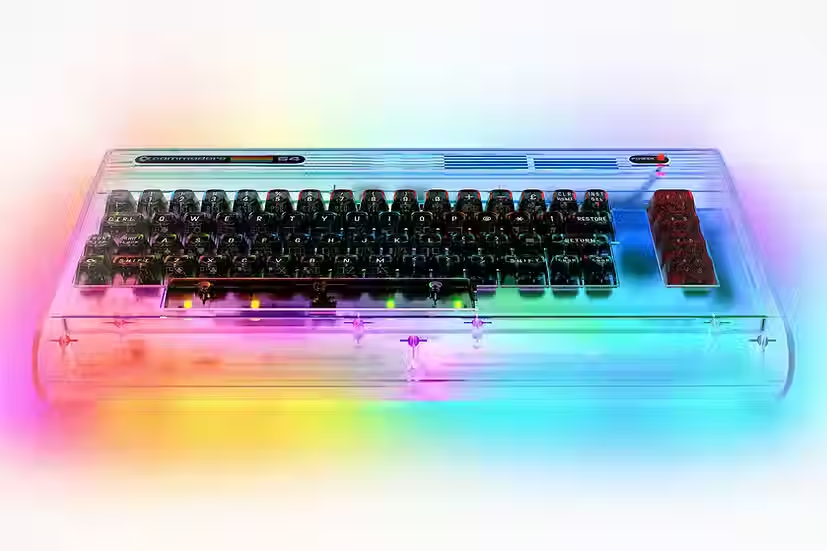When the “SID” hits the fan.
- Mark
- Apr 22, 2022
- 4 min read
Updated: Sep 19, 2022
The SID chip along with the VIC 2, is arguably what separated the C64 from the 8 bit pack. Both of them give the C64 its unique graphics and sound and both have been deservedly “pushed” far beyond their limits by demo coders and some of the more notable games on the system.
Today however, I want to focus on neither of these chips but a modern audio solution that replaces the SID chip. Prior to doing this, we need a brief run down of the original chip(s).

The original “breadbin” C64 was shipped with the 6581 SID chip (whereas the C64c had a newer replacement with a few tweaks). The 6581 featured then 3 independent sound channels all with their own oscillators and eight octaves. Each channel also featured the ability to use any of four waveforms. These are sawtooth, triangle, pulse and noise. It is with a combination of professional music engineers utilising these features (and often some coding “tricks”) that makes the SID sound not only unique but far ahead of any other audio chip at the time. There were 4 main revisions of the 6581 and it was later replaced with the 8580 chip in the “C” and in most C128's, which altered some of the fidelity of the original. Purists of course did and still do argue over which chip and even which revision is better, but for everyday use they are both superb sounding chips with some that slightly improved some minor things over others but then this was balanced out with improvements in other areas (and revisions) depending on the actual chip. To be honest, it's like fine wine and connoisseurs debating at this point. In reality though, the average person like me would be fine with any of them. One technical consideration to mention is that the 6581 original ran on 12 volts and the newer 8580 on 9 volts (due to HMOS2 technology) so swapping these between systems will not only not work but most likely destroy the chip completely due to low tolerances to voltage differences!
So, that's a brief history of the two originals but what about modern replacements?
First, it's worth mentioning that there are one or two reasons why you may want to use a modern replacement. An original SID chip is (obviously) no longer available from Commodore. This means that as (and when?) they die, the SID will become more and more of a rarity. Commodore aficionados (like myself) are constantly aware of this and so we do our best to preserve them. Unfortunately, once they're gone, they're gone.
Second, SID chips (and 6581s especially) are very prone to failure. The 6581 chip (as mentioned) operates at 12 volts (which is fairly high by most standards) and over voltage from either a dodgy power supply or chip failure, can easily damage or destroy the chip. As the chip contains analogue filters, it's virtually impossible to reproduce accurately. The 8580, although comparatively more robust, is still prone to failure due to the same potential issues.
Third, SID chips are expensive. A quick glance on ebay - just now, and I could barely find a 6581 for less than £40.00 and some are even up to £65.00. 8581s however are (generally) less sought after and usually more robust (operating at 9 volts) but even they average at around £35.00 so replacements are not cheap.
So, is all hope lost then? Absolutely not! Replacing your working chip or even a dead chip with a working alternative, ‘I am happy to say’ can be done for a little under £15.00. Now, the quality of these “modern replacements” is not 100 percent accurate (when it comes to audio fidelity) but for the average 21st Century user like myself it is pretty much bang on.
And there is another bonus too. The “Swinsid” replacement (and there are one or two slightly more capable and expensive alternatives) can be configured to replace both the 6581 and 8580 and so can be swapped between machines in a matter of seconds. On the chip itself is a jumper which you can pop on and off to compensate for the voltage differences and this requires no technical knowledge or skills whatsoever. (check the website for details)
So, in conclusion, “do I recommend the Swinsid”? Absolutely. It is cheap, runs cool (unlike the originals which ideally require heat sinks and paste to look after) and is easily swappable between machines. I admit the sound quality is not quite as rich and warm as the originals (especially when compared side by side) but honestly, as a long term C64 user and fanatic I wouldn't notice the difference in everyday use.
My recommendation: If you have a working original, keep it somewhere for safe keeping, and use a Swinsid for everyday computing. If you have a faulty SID, replace it with one of these.
It really is a “no-brainer” for the price and you can sleep safe and sound at night knowing that you've done your bit (no pun intended) to help keep the Commodore 64 alive and kicking!
Happy listening!





Comments